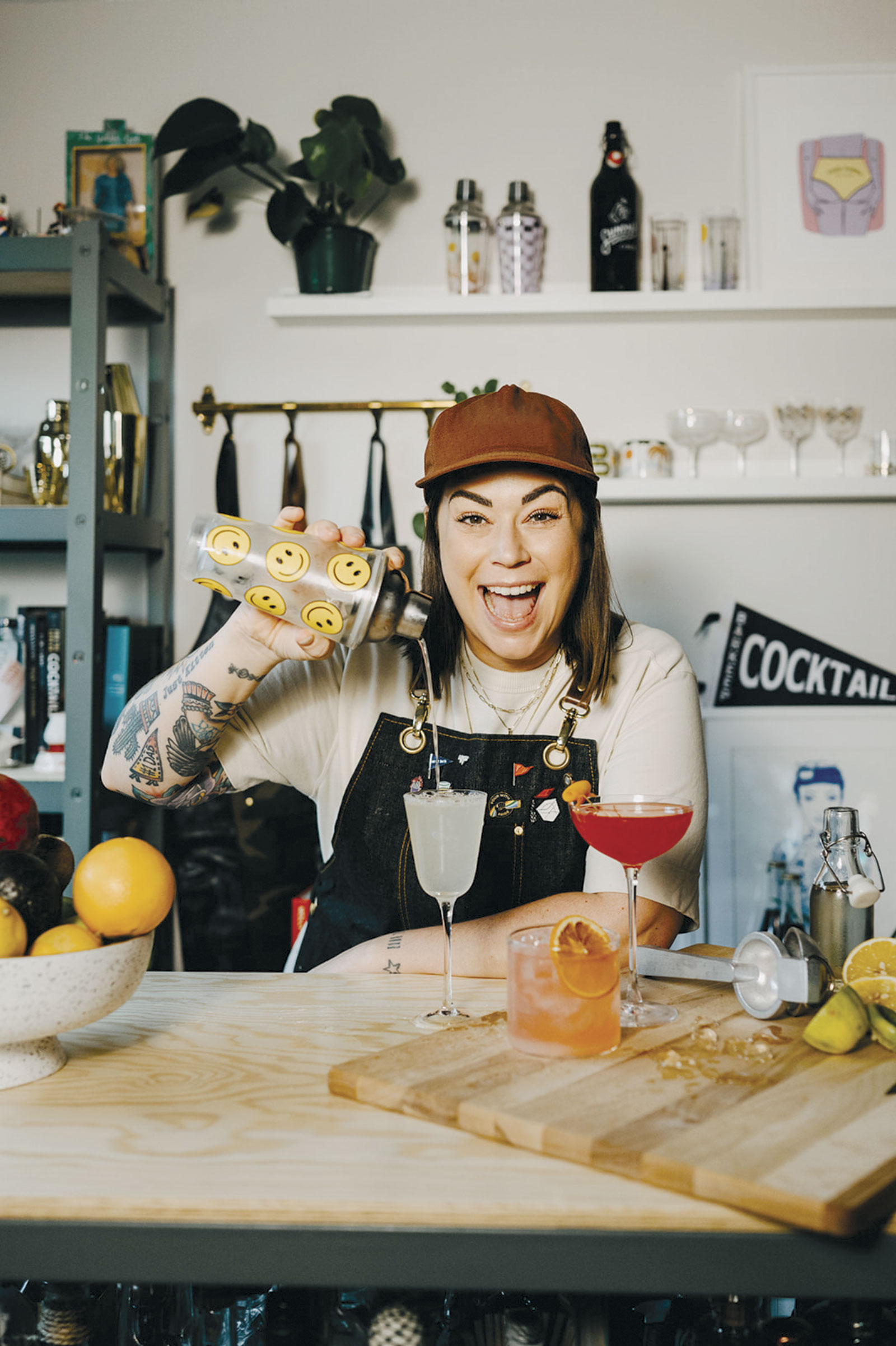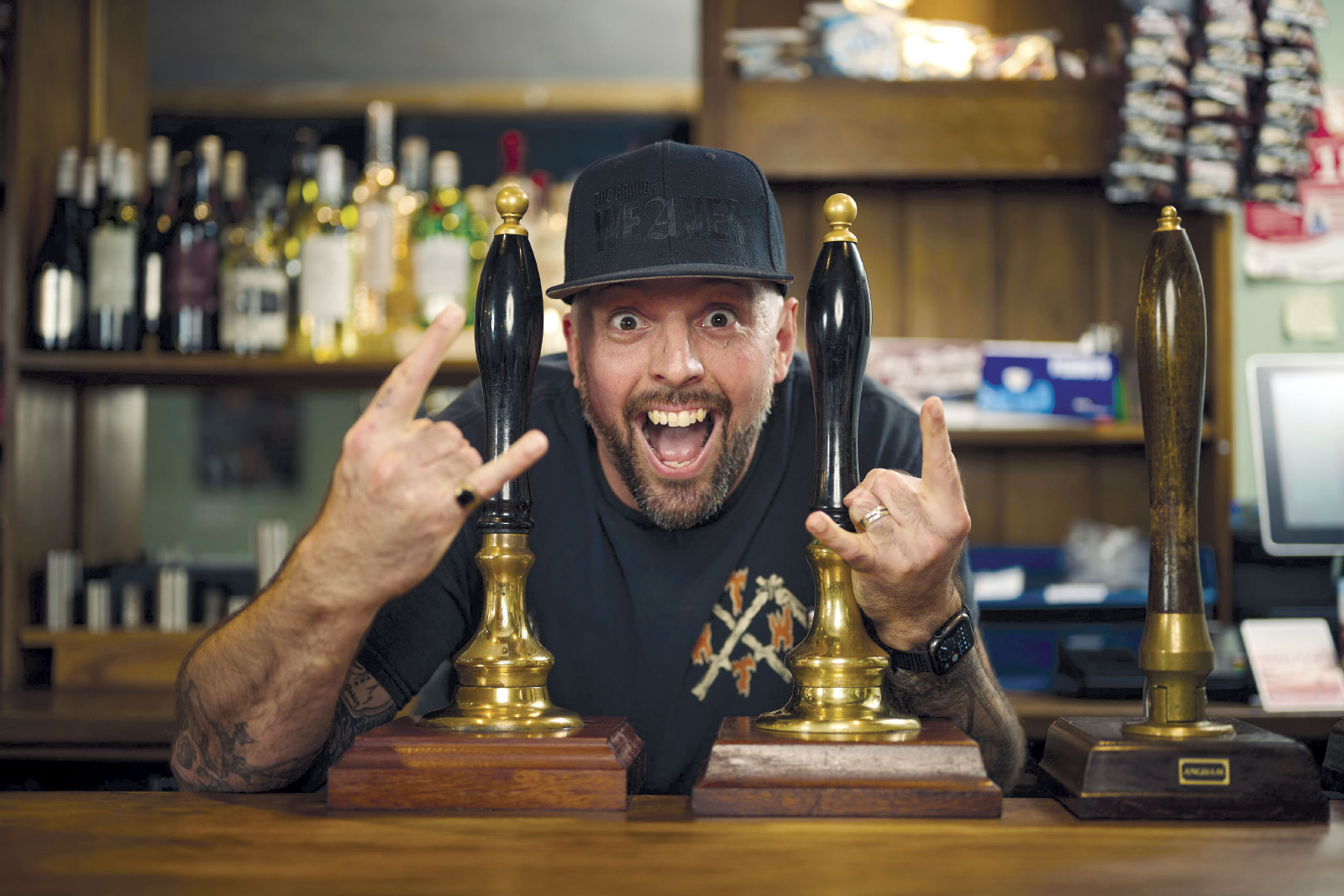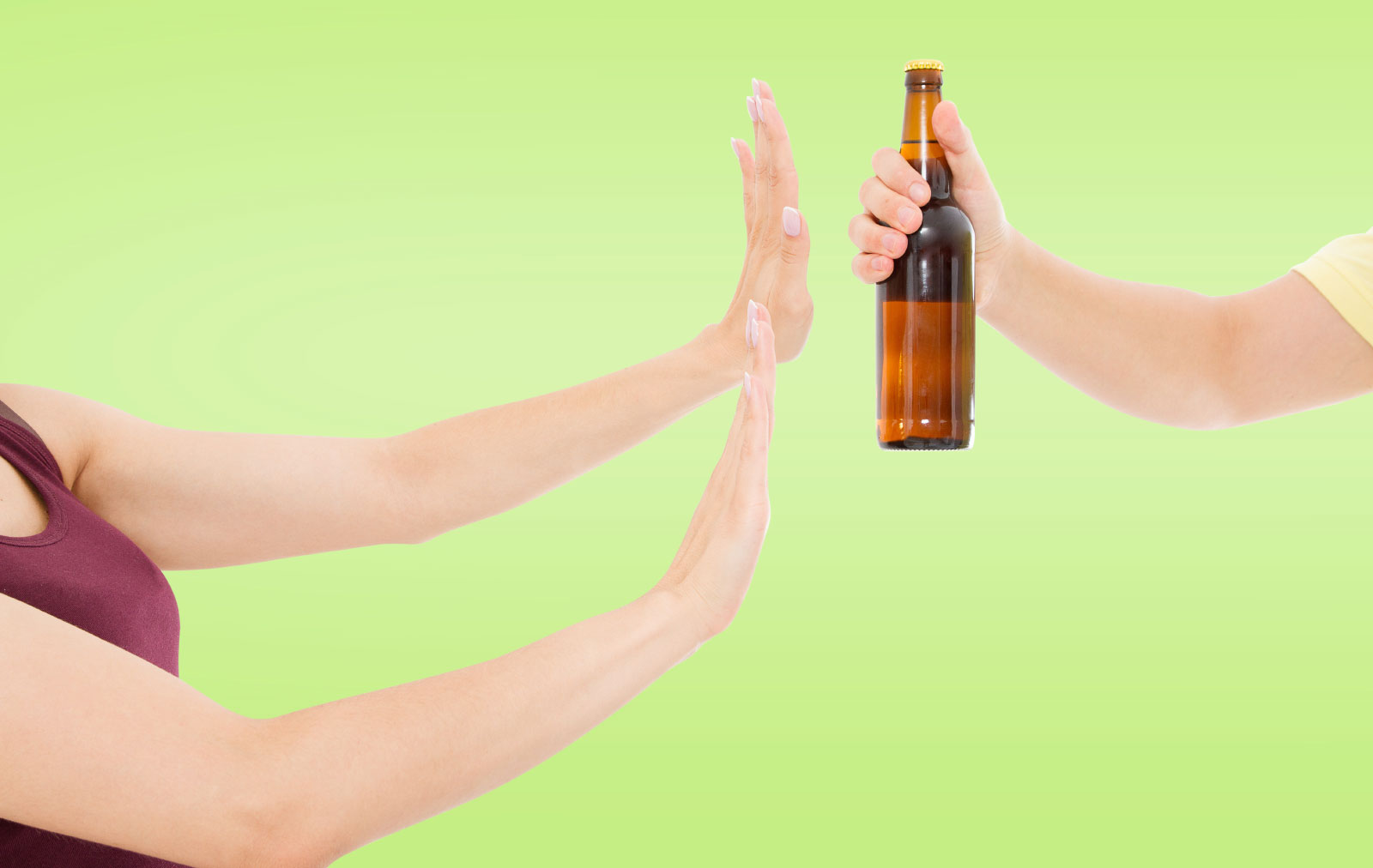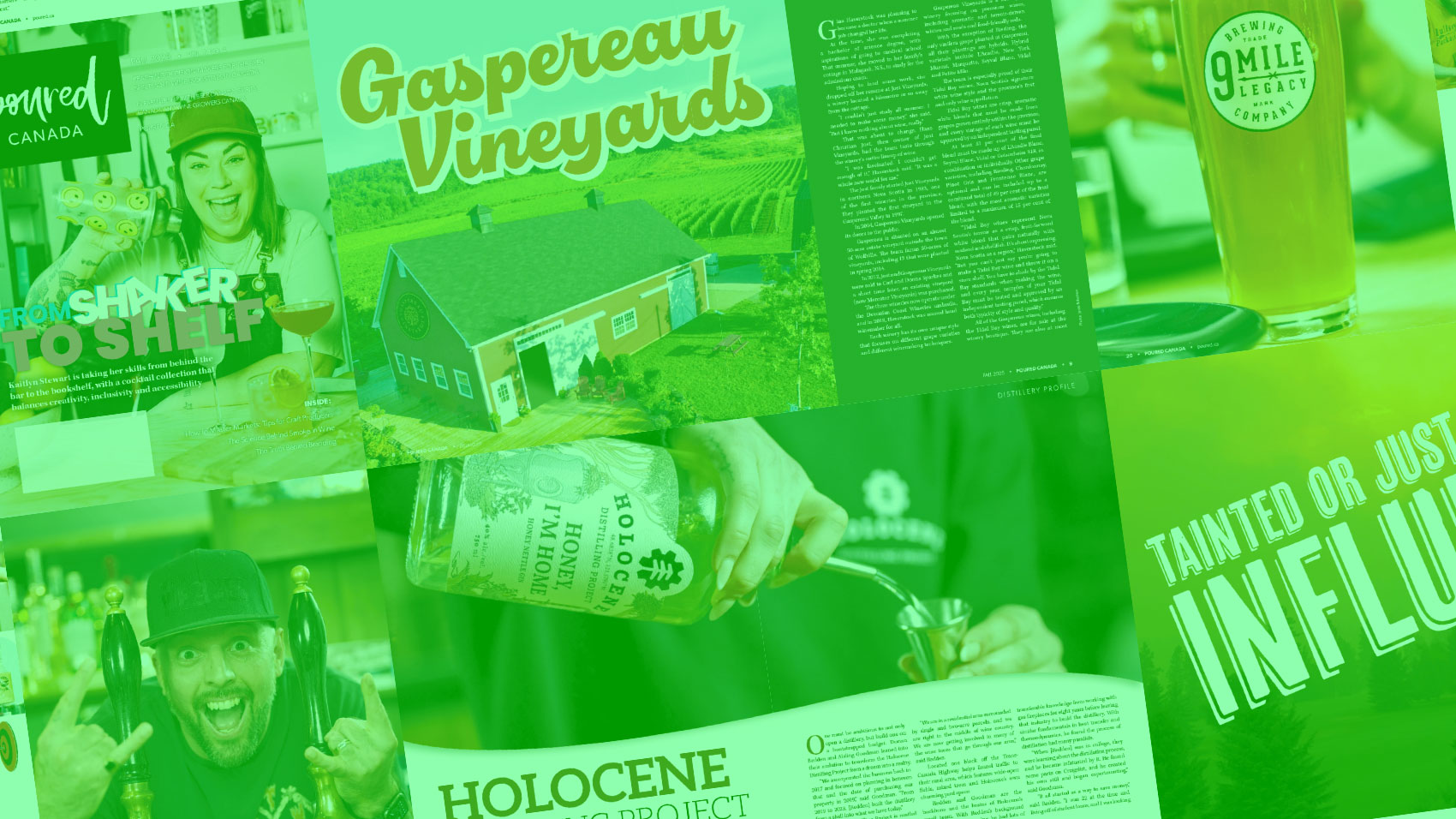For most of her career, Vancouver-based spirits and hospitality veteran Kaitlyn Stewart has been known for what she can do with a shaker, a jigger and a few well-chosen ingredients. She was named World Class Global Bartender of the Year in 2017, has collaborated with the likes of Diageo Spirits and Seedlip, and built an online audience of hundreds of thousands with her platform, Like•a•ble Cocktails. Now, she’s adding another accolade to her ever-growing list: author. With this new title, though her tools remain the same, her goal has evolved. Stewart wants to change the conversation around cocktails, and make sure everyone has a seat at the table.
Her first book, Three Cheers, which hit shelves in October, is packed with recipes for 55 cocktails, but her approach brings every kind of drinker into the fold. Each page features recipe variations for the classic, Stewart’s creative twist and a fully non-alcoholic version of the same cocktail. For her, it’s not so much about catering to drinkers or non-drinkers, but about dismantling the hierarchy that’s kept them apart.
“If you’re feeling like a Negroni, but you’re not wanting to drink, you can flip to the Negroni page and check out the non-alcoholic recipe,” she said. “You’ll know it’s going to be as equally [as] well thought-out as the classic or my version of it.”
Stewart has created recipes for cocktail menus in the past, but Three Cheers is the first publication that’s entirely hers. There’s no mistaking it, Three Cheers screams Stewart’s personal brand of skill, playfulness and inclusivity. Stewart is known for her inventive approach behind the bar, but for the book, she kept a broad audience in mind. “I can get super creative and do wild and crazy things,” she said, “but I reeled it in for the book. I didn’t want people to flip open to a page and see a recipe that called for an infusion, a syrup and 20 steps. That’s intimidating. I wanted the drinks to be accessible.”
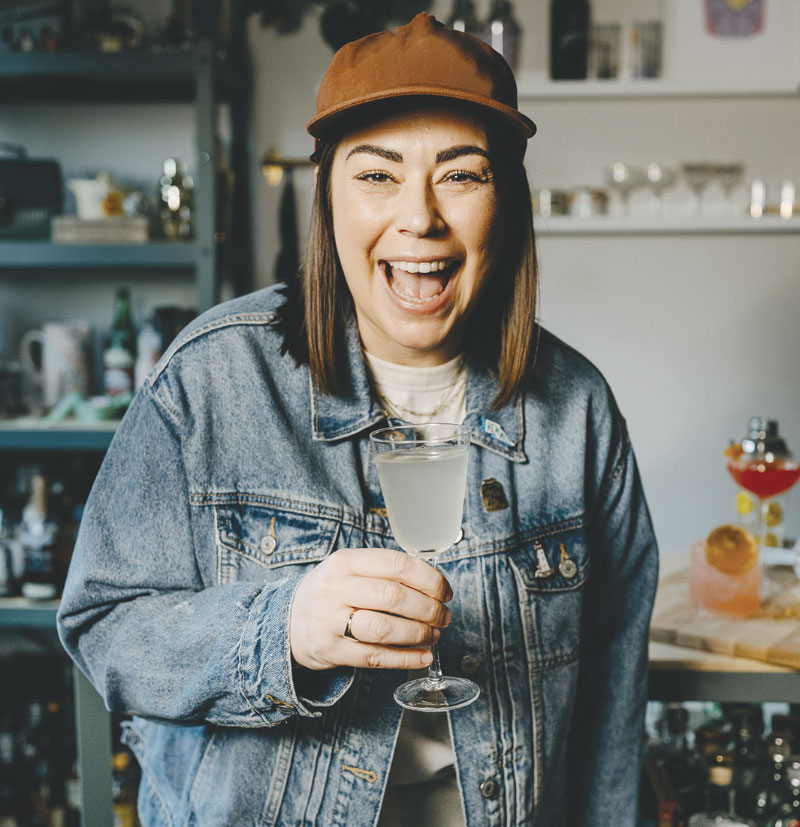
Those driving forces – accessibility and inclusivity – speak to a larger cultural shift in which consumers value quality and nuance, while having the freedom to imbibe or not. That doesn’t mean her reader is necessarily a drinker or a non-drinker; rather, they value flexibility. “People are drinking more mindfully now,” she said. “One day they’ll have an alcoholic drink, and the next, they’ll choose a non-alcoholic version. In Three Cheers, each version is as important as the next.”
For Stewart, her Negroni trio ended up being one of her favourites in the book. She created the classic, her version called “High and Dry” (“a Negroni with training wheels”) and the spirit-free “No-Groni,” which leans into Italian bitters, tricking the brain just enough to feel familiar.
Especially when it came to spirit-forward cocktails like a Negroni or Old Fashioned, Stewart was up for the challenge. Translating those into non-alcoholic versions meant rethinking texture, mouthfeel and that elusive “burn” most alcohol-free spirits struggle to replicate. “That really distinct characteristic of alcohol – that lingering burn – it’s hard to recreate,” she said. “So, I used other bittering agents that give you that drying effect. It was a task, but it was a fun task.”
It was her mission to create non-alcoholic drink recipes that tasted just as good, if not better, than the real thing. “I have a lot of people in my life who don’t drink, and it was really important to create a book that was as inclusive as possible,” she said. “When I first started bartending 20 years ago, there were no spirit-free gins, tequilas, aperitifs. It was either a virgin Caesar or a virgin strawberry daiquiri. That’s all you were getting. But now, there’s no excuse.”
Giving equal weight to non-alcoholic cocktails and demonstrating just how complex they can be was strategic. “I hope people see it as a step forward. Especially in the non-alcoholic space, putting those drinks on the same playing field as any cocktail. Just because it’s non-alcoholic doesn’t mean it’s any less than,” she said.
People are drinking more mindfully now. One day they’ll have an alcoholic drink, and the next, they’ll choose a non-alcoholic version. In Three Cheers, each version is as important as the next.
Kaitlyn Stewart
While developing her book, Stewart had to make some tough decisions, starting with which drinks would make the final cut. The concept was built around 55 classic cocktails, but narrowing down that list proved to be one of the biggest challenges.
“Choosing those 55 cocktails was probably the hardest part,” Stewart said. “I really tried to spread the base spirits evenly. I didn’t want it to be all gin or all bourbon. I wanted to give each spirit a fair shot.” That meant including a few drinks that might raise eyebrows among purists. “There’s a Sex on the Beach in there,” she said with a laugh. “When you think of that cocktail, you don’t automatically think classic. But it was fun to play around with those kinds of choices. I didn’t want the book to be too stuffy. I wanted it to be fun.”
Fun plays a huge role in Stewart’s approach to recipe creation. Her creative process is fed by food, music, travel, late-night conversations and childhood memories. “I grew up in the restaurant world,” she said. “My parents ran restaurants, and my grandma was always cooking. I’d sit in the kitchen and watch her turn basic ingredients into a fancy meal. So, when I’m eating something now, say, a Thai green curry, my brain starts to dissect it. I think, ‘This makes sense in food, so why couldn’t it work in a cocktail?’”
Naming the drinks is one of her favourite parts. “A lot of people hate naming cocktails. I really love naming them,” she said. “A lot of the time I name them after song titles or lyrics, something I’ve listened to and thought, ‘That would sound really good as a drink.’” For instance, in Three Cheers, her version of a French 75 is the Eiffel 65 (Millennials will remember). It was her signature Tom Cat Collins (inspired by her cats, obviously) that helped her bag the World Class championship round.
Whether she’s behind the bar, in competition or now as an author, Stewart’s aim is to be unapologetically herself. “I wanted Three Cheers to feel like I was inviting you into my home. I wanted readers to feel comfortable, like they could make these recipes in their kitchen. It was made to feel personal and intentional,” she said. That means that while she loves a studio-ready image of the perfect cocktail, you won’t find that in Three Cheers. “We approached our photography in a grassroots way, with lots of natural light. It’s all very authentic.”
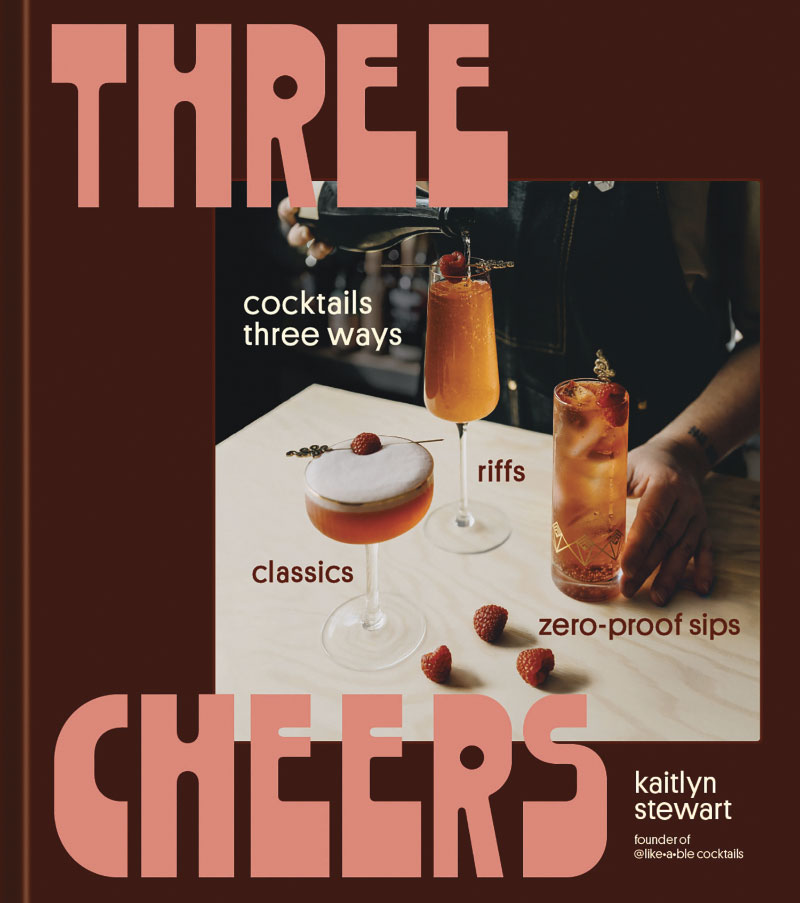
For its imagery, the entire shoot took place in Stewart’s apartment, captured by a friend who usually photographs people, not cocktails. She wasn’t interested in fancy backdrops, fake condensation or over-styled glassware, either. They worked with whatever natural light was coming through the windows that day.
Stewart has gotten used to inviting her audience into her home. Her social media followers get a daily glimpse of her life at her home bar, along with tutorials and education on cocktails ranging from classic margaritas to a cilantro, chocolate spritz. Finding popularity on social media wasn’t something Stewart ever planned, though it’s turned out to be an unexpected asset. She now uses her audience as a kind of real-time focus group, especially when curating menus or developing recipes.
“I’ll look at what’s resonating – what’s getting saved, shared, commented on – and use that to shape what I create. I can see if people are leaning into martinis or spritzes, and that data helps guide my decisions,” said Stewart That sense of collaboration has been infused into much of her career. From building bar teams to working with book editors, Stewart knows how to surround herself with people who make the work better. “If you don’t have a good team, you won’t be as successful,” she said. “As much as my Capricorn side wants to tackle it all myself, I’ve learned you can’t do it all alone.”
Now, with Three Cheers, she’s hoping the book will affect others in the way that all great hospitality does, by making people feel included, no matter where they are.
“Non-alcoholic drinks deserve to be on the same level as any other cocktail, not treated like an afterthought,” she said. For her, it’s a way to push the industry forward, but also make space for more people to feel included, no matter how they choose to drink. “It doesn’t have to be soda or juice. It can be thoughtful, complex and genuinely good. That’s what I hope this book shows: there’s room for everyone at the bar.”

